When it comes to respecting and honouring the traditional owners of the land on which we play, walk and live, creating an Acknowledgement of Country with kids plays an important role. Not only do our students need to understand what an Acknowledgement of Country is, but being able to work together to write their very own allows them to show respect, appreciation and a willingness to learn more.
With this in mind, the Teach Starter teacher team sat down to chat with some First Nations educators to gather their best tips on how to write an Acknowledgement of Country. Jordyn is a Wiradjuri, Ngemba and Paakantji woman and primary teacher living on Kombumerri Country, and Tramain is an educator from the Bundjalung people.
Read on for tips from these educators on what to talk about with your students, how kids can be part of writing an Acknowledgement of Country for the classroom and how to continue to support diversity and inclusion in your classroom.
Take a peek at this Acknowledgement of Country display Year 6 teacher Harry created for his classroom with the help of our Acknowledgment of Country activity for Upper Years!
What Is an Acknowledgement of Country?
Let’s start at the beginning — after all, you can’t sit down to help your students understand the deep meaning of writing an Acknowledgement of Country without thinking through what it means yourself! At its heart, an Acknowledgement of Country is a formal recognition of the First Nations peoples’ custodianship of the land and a show of respect to their cultures and traditions.
Writing this with your primary students is part of honouring the First Nations peoples’ connection to the land and their continuing presence, and it helps our students learn to value the sharing of Aboriginal and Torres Strait Islander cultures.
Print an Editable Acknowledgment of Country Template for your classroom!
What’s the Difference Between Acknowledgement of Country and Welcome to Country?
The names are similar and both bring attention to First Nations people being the custodians of the land, but there are distinct differences at play between these two.
While we’ve already covered the basics of Acknowledgement of Country, the ‘Welcome to Country’ is essentially a traditional First Nations protocol performed by a local First Nations person or elder, welcoming visitors to the traditional lands of their people.
While non-First Nations people will typically create an Acknowledgement of Country, the latter is something that will only be done by First Nations peoples.
We love how Scott Kneebone, a Bangerang man, explains the difference in a kid-friendly way:
“A Welcome to Country is like you’re hosting a birthday: you do a welcome and say thank you for coming to my birthday. And an Acknowledgement of Country is like if you’re a guest at the birthday: you would say thank you for having me.”
How to Write an Acknowledgement of Country with Kids
When you’re writing an Acknowledgement of Country with kids, the goal is to be as sincere as possible. While there are no specific words you need to include, here are some tips from Jordyn and Tramain to help get your class started!
- Ask the local community how they would like to be acknowledged before discussing with your class. You can contact your local AECG (Aboriginal Education Consultative Group). When she moved interstate, Jordyn’s outreach to her local AECG resulted in a wealth of information about the local area and the preferred way to refer to the traditional custodians in the area.
- Read up on Traditional Owners. The AIATSIS Map of Indigenous Australia provides helpful information on Traditional Owners.
- Don’t start from scratch! Deconstruct an already written Acknowledgement of Country with your class before re-creating your own class Acknowledgement of Country, says Jordyn.
- Go for a walk. Tramain takes her students for a walk around the school and talks about all the natural elements (we’re acknowledging more than land e.g. sky, waterways, etc) and the stories connected to them.
- Keep it simple. Acknowledgements of Country don’t need to be limited to assemblies and special events where Aboriginal people are expected to attend, Jordyn says. They should occur as a sign of respect whether Aboriginal people are present or not, and that includes in classrooms!
What to Include In an Acknowledgement of Country
While there is no one right way to write an Acknowledgment of Country, here are a few helpful ways to structure your students’ Acknowledgments.
- Specify and describe the Country you are on (e.g. ‘pay respects to Elders who have cared for the mountains, rivers, sea and sky where our school is located on ______ Country.’)
- Always name the Mob in the Acknowledgement. If the land is contested (eg. Brisbane), always name both or all Mobs.
- Use traditional names (instead of English names) where possible for significant areas important to you and your local Aboriginal community.
- Pay respects to Elders (past and present). As Jordyn explains, “Elders are the backbones of our communities and the knowledge keepers of our culture. So, acknowledging them is important. but it doesn’t need to be in those exact words.”
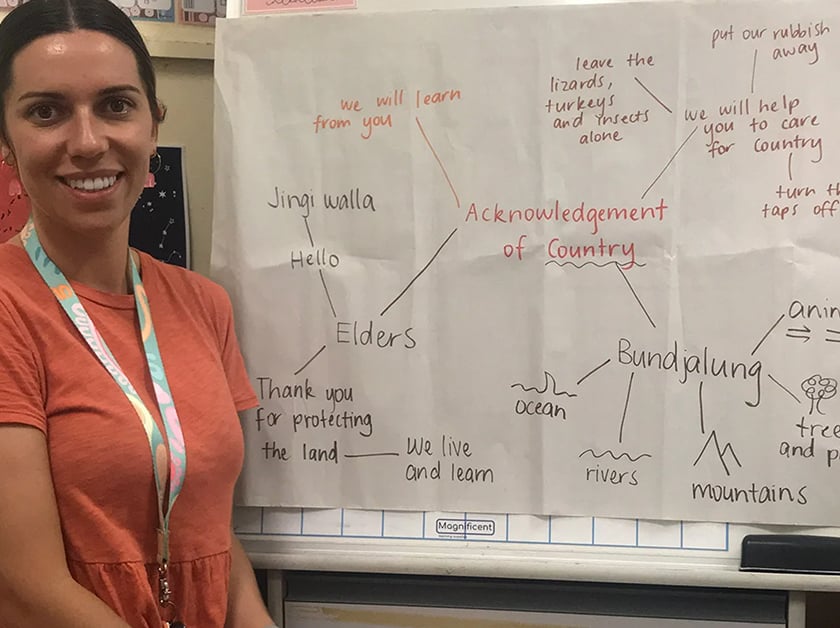
Jordyn shows the connections in her classroom Acknowledgement.
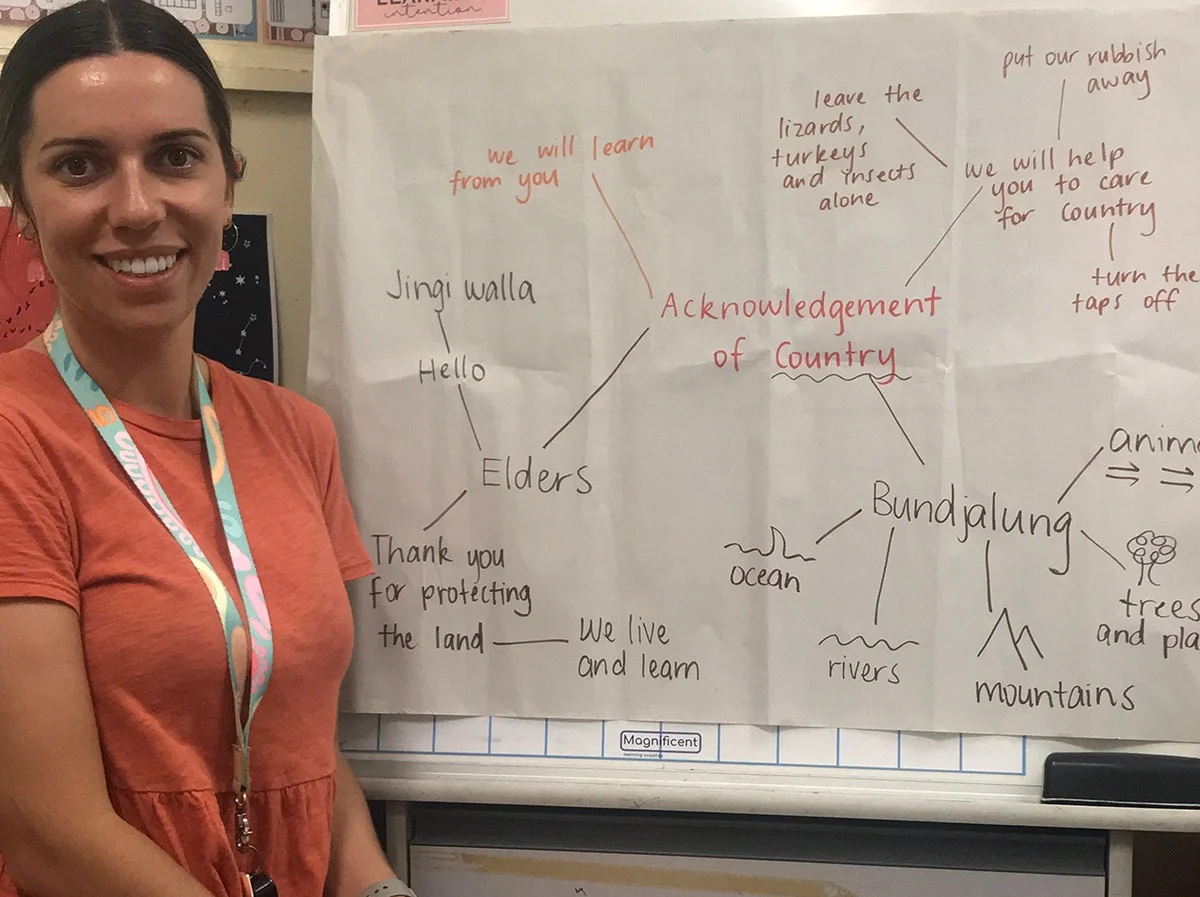 How to Display Your Classroom Acknowledgement of Country
How to Display Your Classroom Acknowledgement of Country
Once you have written your special class Acknowledgement of Country, it’s important to display it in the classroom so students can easily view it and continue to be mindful of the Aboriginal and Torres Strait Islander peoples whose land we live on today. You may even want to read your Acknowledgement of Country aloud each morning with your class, taking the time to pay tribute to the traditional owners of the land and reminding your students that yours is a classroom where diversity is embraced and individuals are respected.
This First Nations Acknowledgement display is a great way to visually facilitate discussion about your local Country.
Explore our teachers’ favourite First Nations Australia resources to support your students’ learning about the traditional owners of the land!
Banner image via Shutterstock/Rawpixel.com

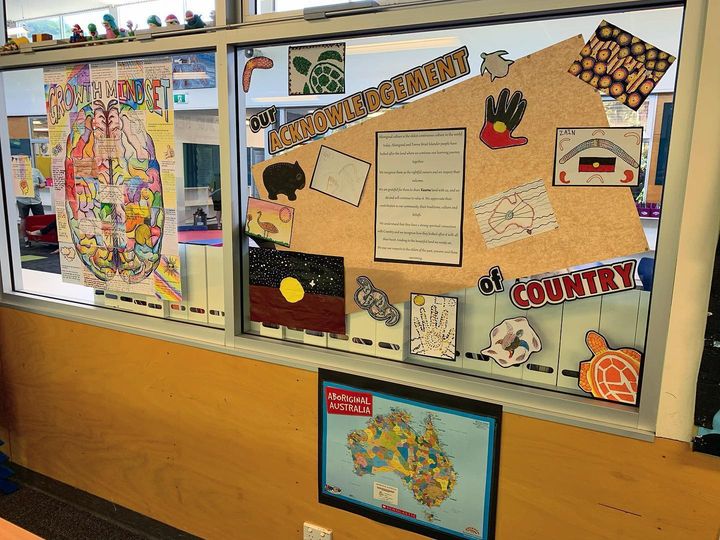
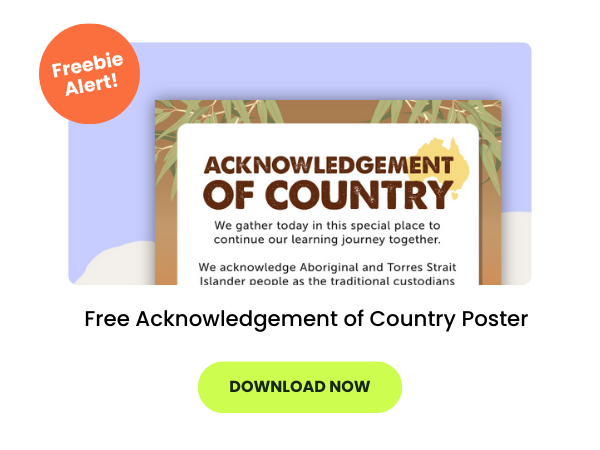
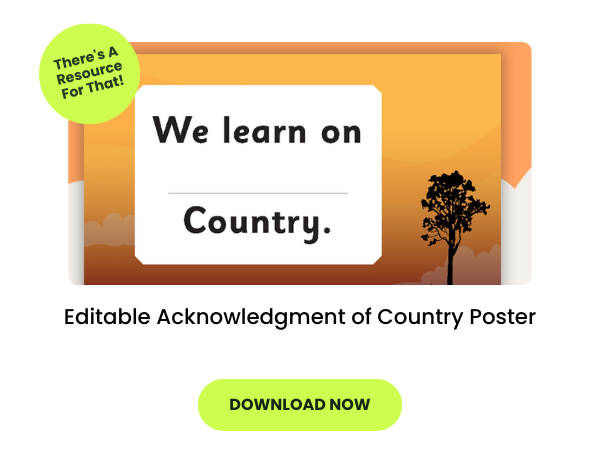







Comments